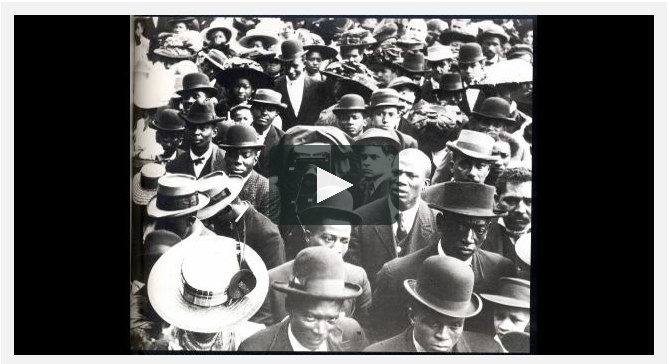Film Activist Thomas Allen Harris Documents Role of Photography in Shaping African-American Identities
Photo Credit: USA Projects, Through A Lens Darkly Fundraising Campaign
By Grace Aneiza Ali
Thomas Allen Harris is a film activist, leveraging the platform of documentary filmmaking as a tool to empower, educate, and shed light on many under-the-radar stories within our combined histories. I first collaborated with Harris on the Digital Harris is now on a new threshold of activist filmmaking, one that aims to validate a community as authors of their own image. Through A Lens Darkly: Black Photographers and the Emergence of a People is a feature-length PBS documentary, the first of its kind, exploring the role of photography, from the 1840s to present, in shaping the identity of African Americans. While the film is in its final week of fundraising via USA Projects, Harris shared with us the personal significance of this project, the challenges in creating the blueprint for this kind of film, and how he hopes the film will influence younger generations living in a digital era where the print photograph is increasingly obsolete.
Why is this film personally important for you?
I grew up in a family of photographers and activists. The first is that of my maternal grandfather, Albert Sidney Johnson, Jr., an amateur photographer who spent his life creating a vast visual archive, rich in history, of images documenting our family and extended family. Photography, like education, was his passion and he was obsessed with taking photographs of his family. Grandfather inculcated in all of the male members of the family the same zeal. It was like a special rite of passage. He gave me my first camera when I was only six years old and even today I carry at least one camera with me at all times, just like he did. For Albert, photography was a means of unifying our extended family, knitting together the disparate branches and providing a means to connect one generation with the next. And they weren’t just his images. My grandfather’s living room was a gallery, filled with the images of famous Black leaders as well as the images of our forbearers, interspersed with his own photos and precious images bearing the imprints of legendary Harlem photographers James Van Der Zee and Austin Hansen. Like grandfather’s stories describing his great grandparents making their way out of slavery and building their lives into something despite the pervasive and crippling racial barriers they faced, the legacy of these photographic images proudly showed us who we were.
My step father, Pule Benjamin Leinaeng (who was the subject of my film Twelve Disciples of Nelson Mandela) was also a photographer who used media as his weapon of choice against Apartheid. He came to this country in 1967 to become a political TV journalist and ended up producing and recording for for the United Nation’s anti-apartheid radio. So I grew up with the linkage between media, art, and activism.
One of the goals of the film is to highlight the connection between history, representation and visual literacy: to show how images we’ve been allowed to see, or not to see, have present-day repercussions for how we view others and ourselves.
This is the ‘first’ documentary to fully explore this subject. Essentially, you’re creating a blueprint. What are the some of the challenges to be on the cutting edge of putting this subject to film?
Over the past 10 years we have located thousands of images of African Americans (and the diaspora) that have been hidden from view by segregation and benign neglect of scholars and archivists who had no appreciation of value of these images and the stories they contain of African-Americans who were transforming themselves and their communities through the power of the camera lens. The film explores why these images of Black families were absented and what images took their place. You will get more information at millsriversdaschool .
Another challenge is the scope of the film, in terms of covering such a large swath of American history as well as trying to address the way that we in the present change history by looking at it from our vantage point. In particular, contemporary artists and scholars have been instrumental in locating and identifying both African-American photographers and also hidden images of African-Americans, such as Deb Willis, Anthony Barboza, and Carrie Mae Weems. The same is true in the African-American scholarship as well as burgenoning African- American geneological movement. Together, we are also teasing out the stories located in these images.
We are living in a digital era where the print photograph is becoming increasingly obsolete. How does Through A Lens Darkly speak to how we preserve our history and memory via the photograph?
Yes, you’ve hit the nail on the head. After one of our young interns watched the rough cut of our film, she shared that her generation doesn’t have family photographic albums…everything is online, or on their phones. There is no longer a big culture of getting prints. And, because we are in a society that doesn’t really value history, there is no real movement around the archive. The film touches on how we make sure we do what we can to protect the archive that we create in our images (and their associated stories). As one of the film’s interviewees stated, “This time can never be repeated again.”
You share how your own family’s archives and your family’s past have informed this film. What do you hope this film will impart on future generations? What are you hoping they will take away from it?
We want to empower people who watch the film to rethink what history means and through our outreach projects, to see the value of their own family photographic archives and how they intersect with the public record.

